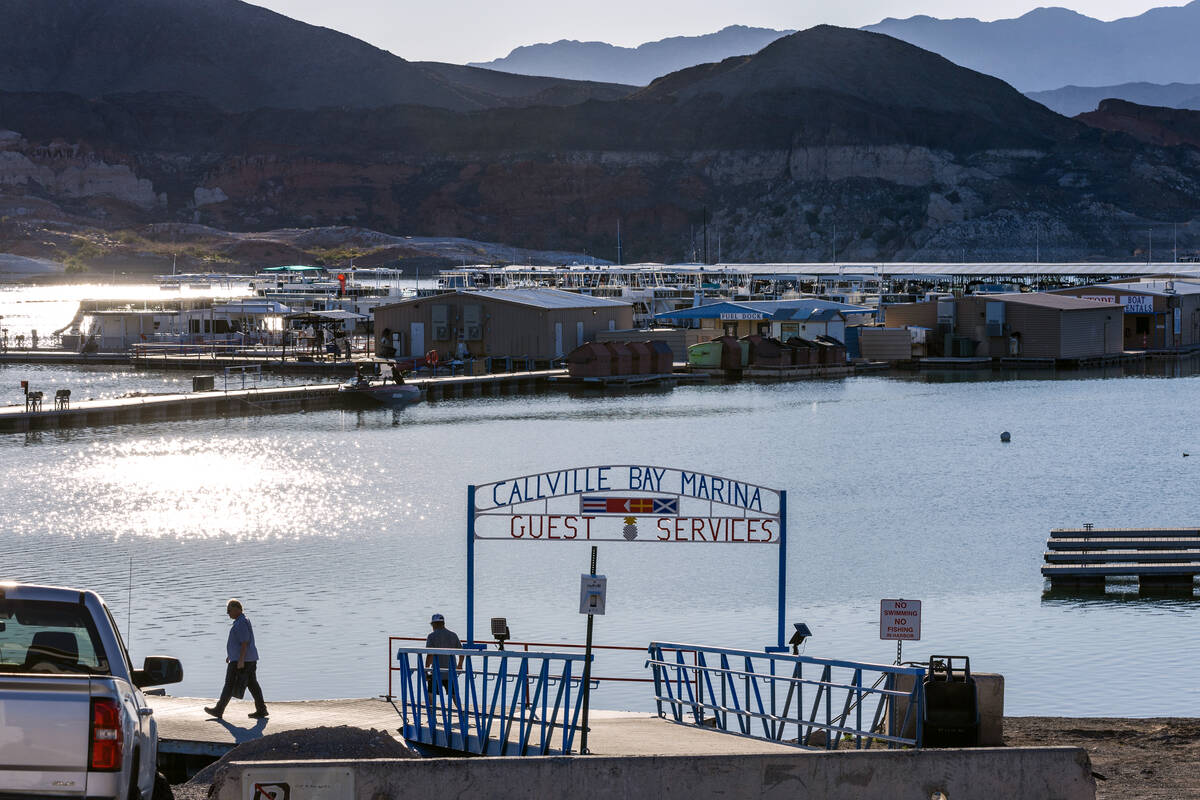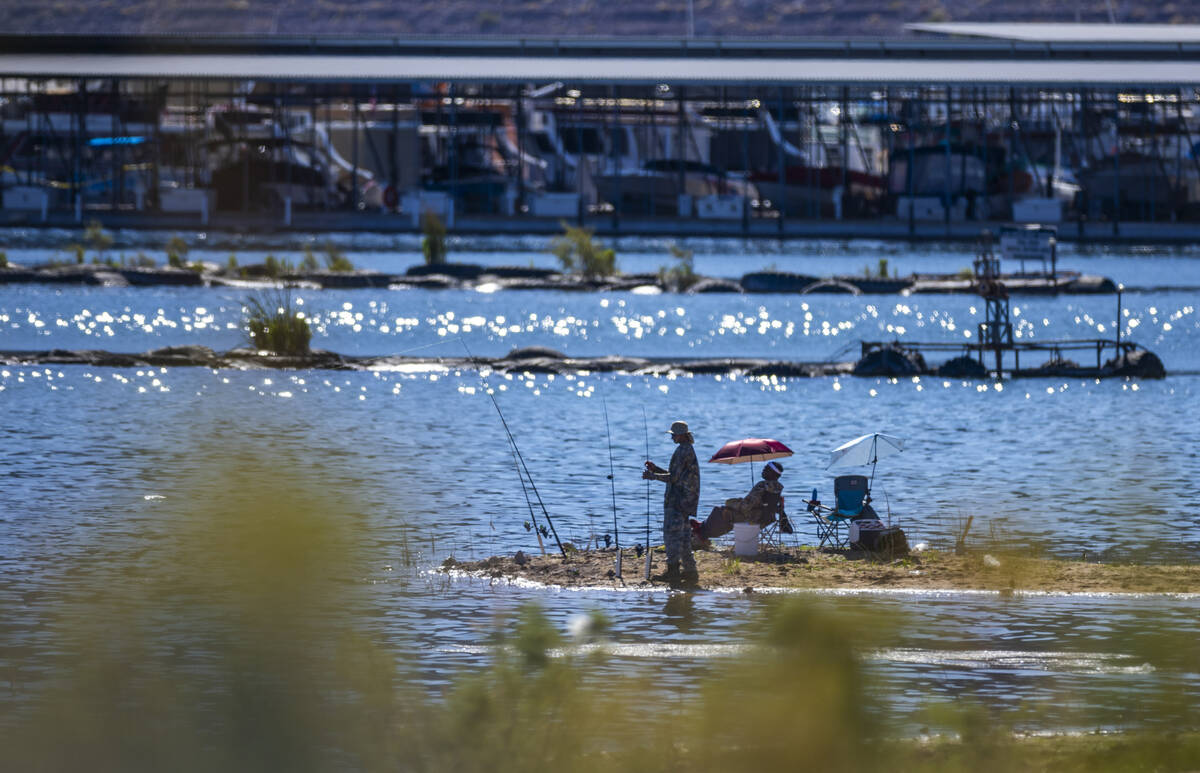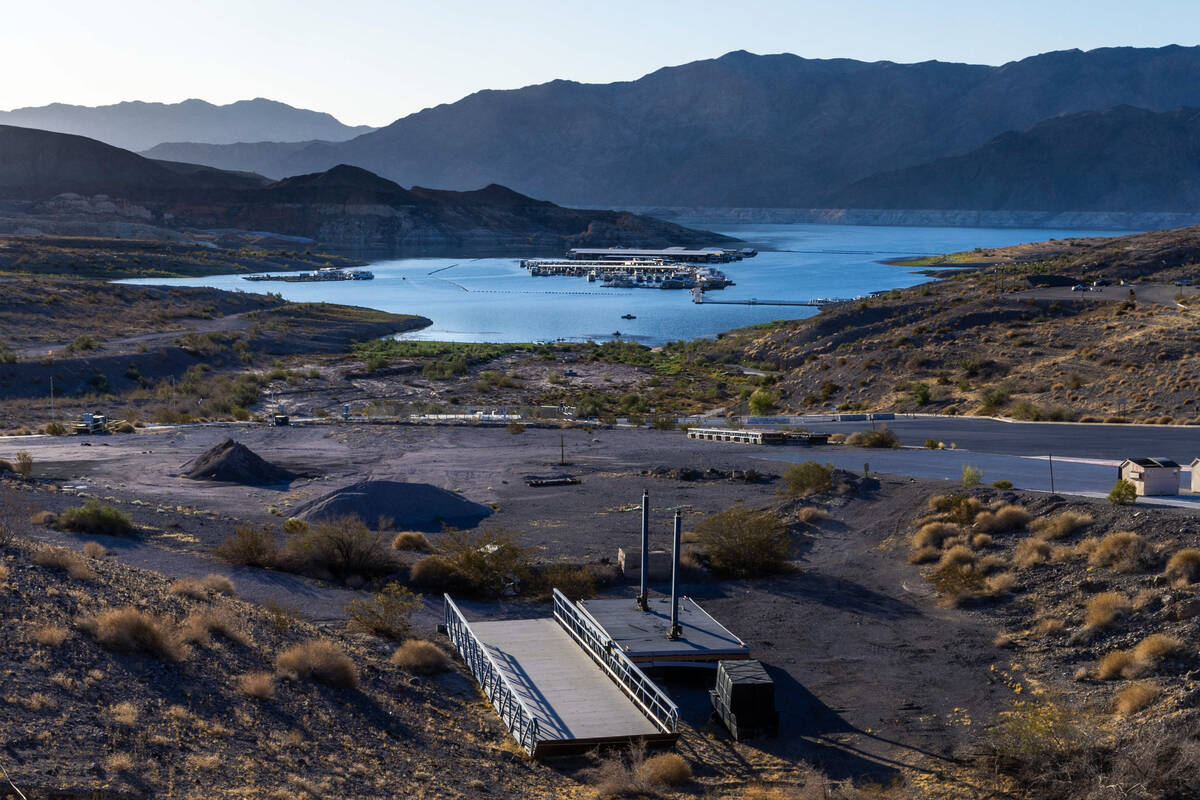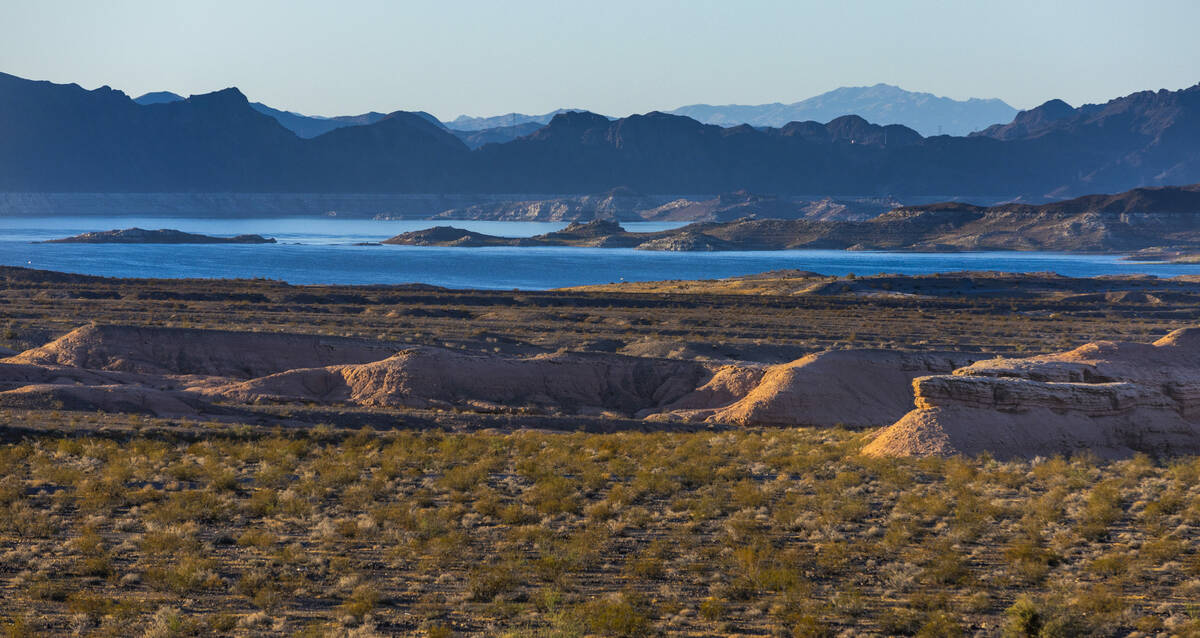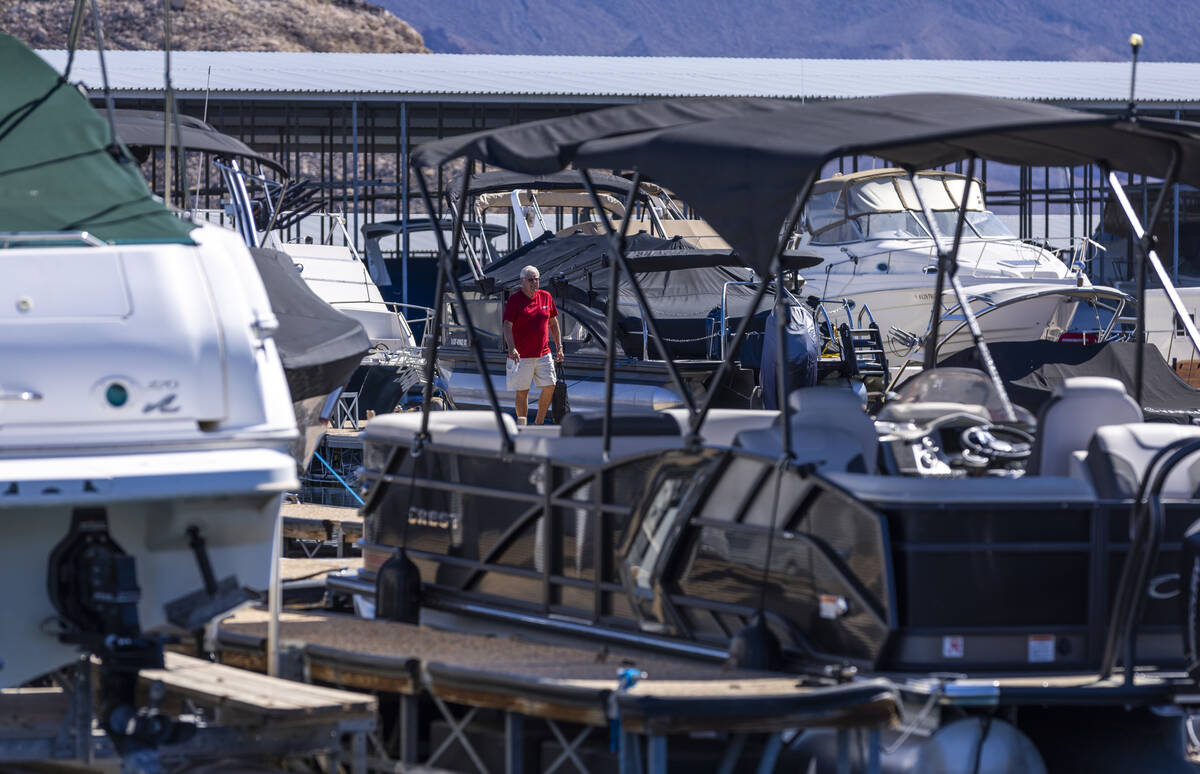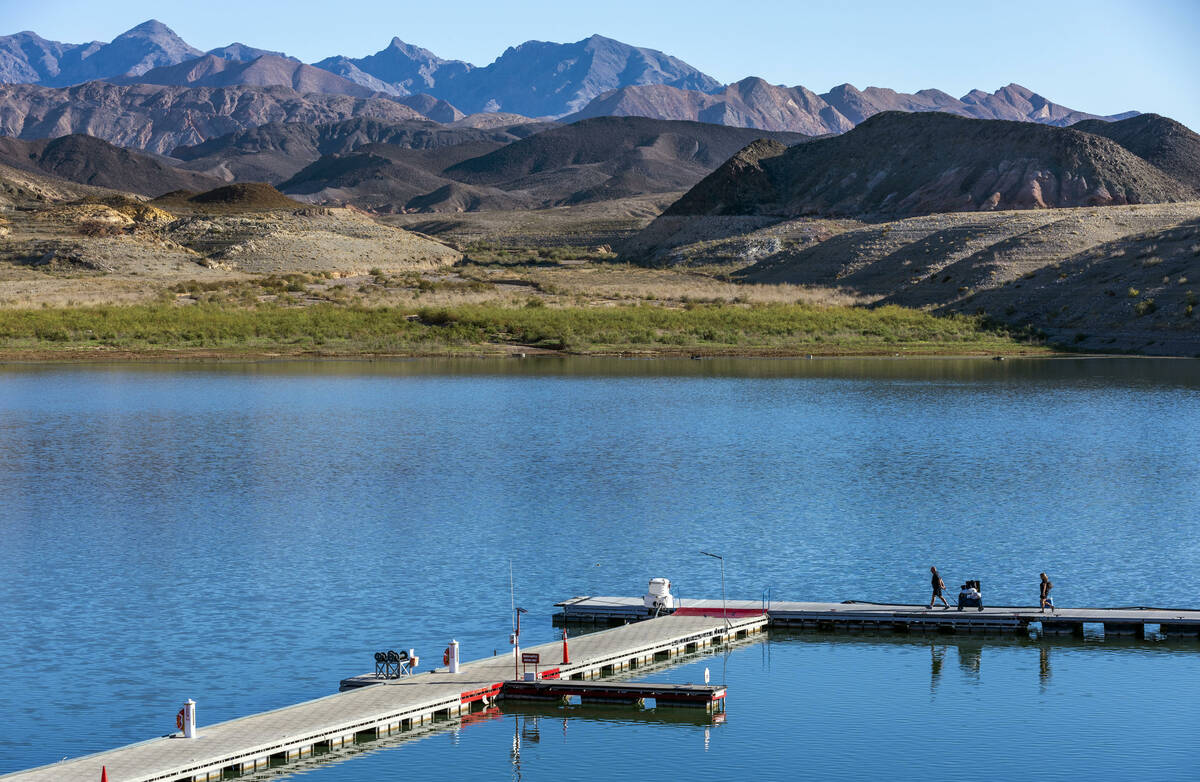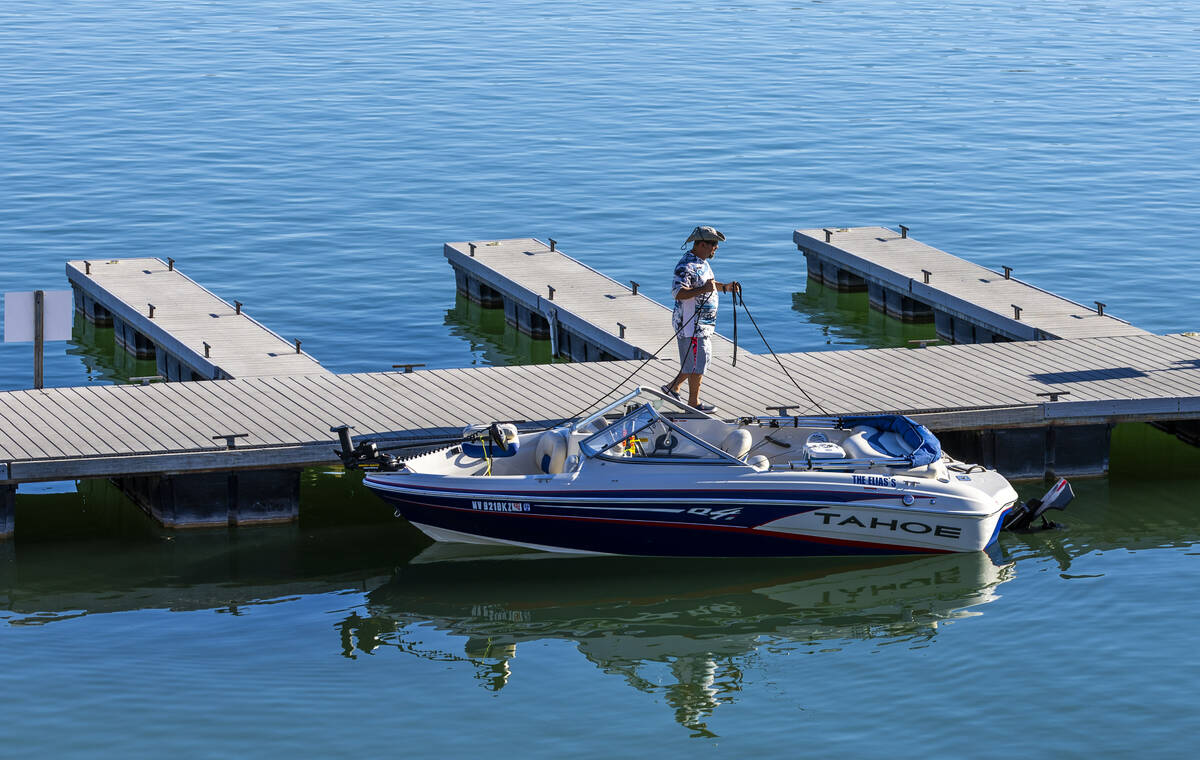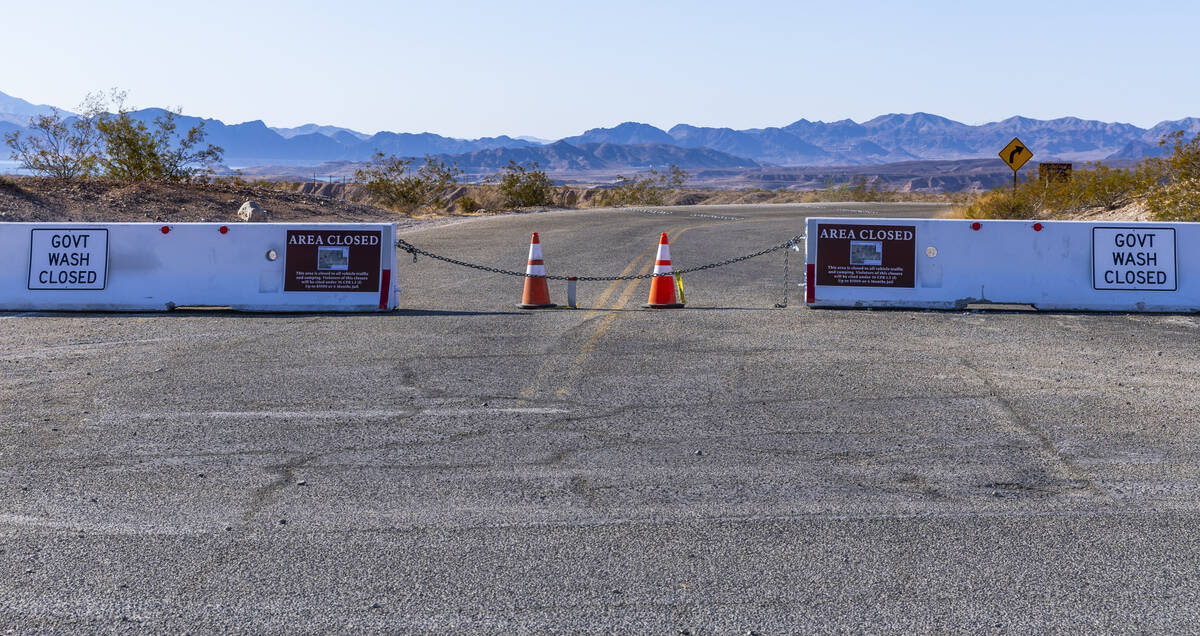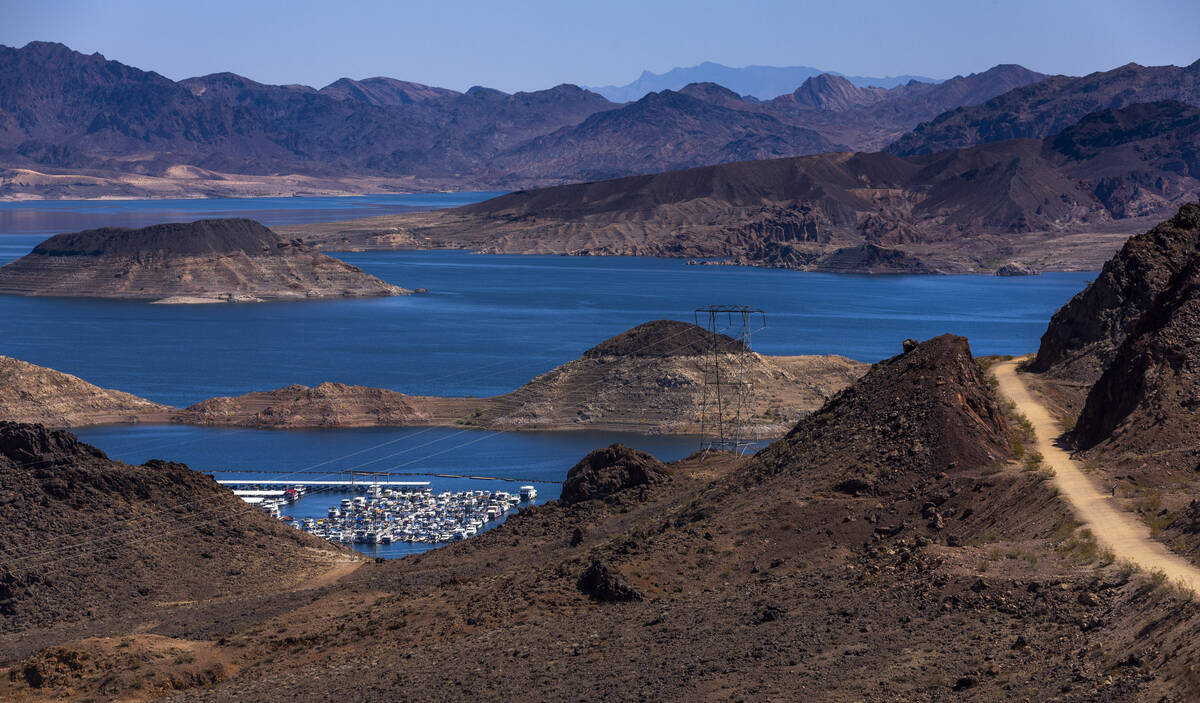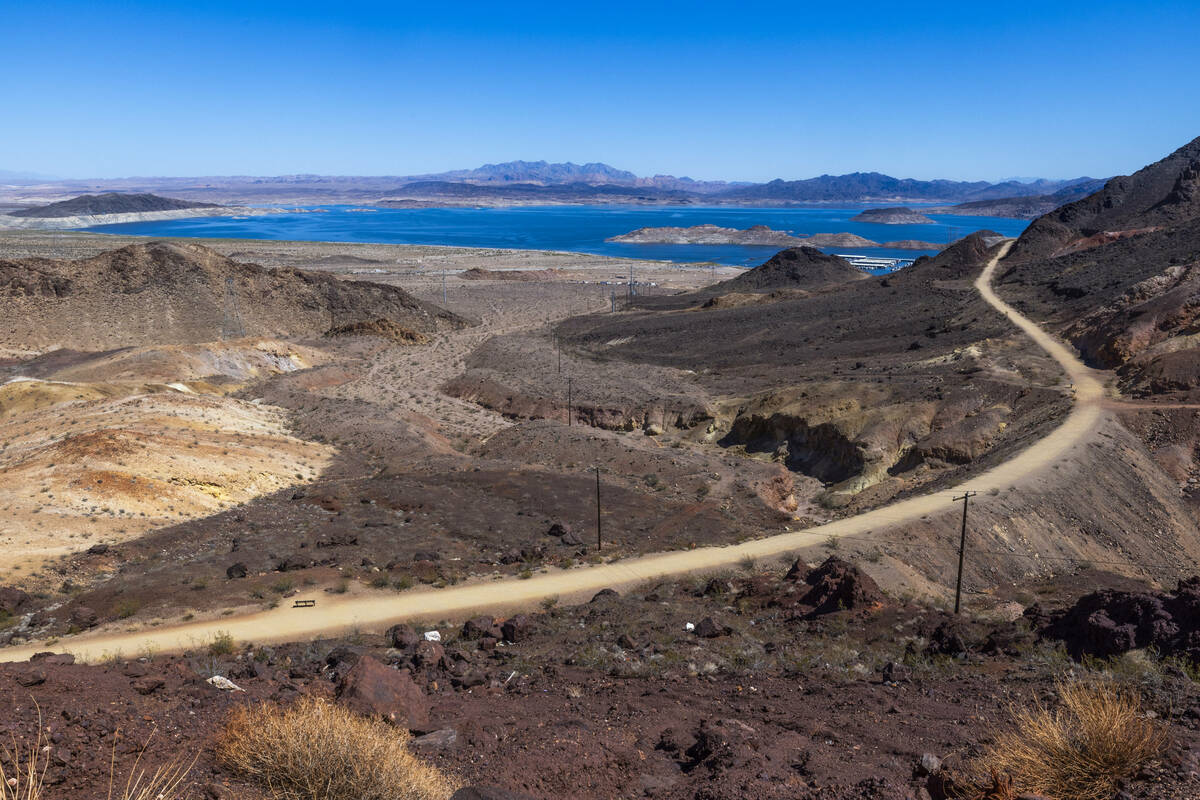‘We’re absolutely prepared’: Nevada faces Colorado River cuts for 4th straight year
Nevada will face cuts in how much water it can use from the Colorado River for the fourth year in a row, triggered by new Bureau of Reclamation projections for Lake Mead, the country’s biggest reservoir.
While the Colorado River Basin has experienced above-normal snowfall for two consecutive years, it’s not been enough to best Western drought that’s persisted over two decades. And water managers are bracing for further potential cuts if dry years fueled by climate change and La Niña conditions are to follow.
In 2022, Lake Mead’s water level was the lowest it’s ever been. Today, it stands nearly 22 feet higher, but it’s expected to dip to only 13 feet above the all-time low in the next two years, according to projections released Thursday.
“It’s not where we were two years ago,” Reclamation Commissioner Camille Calimlim Touton told reporters at an event in Las Vegas this week. “We’re in a slightly better place, and we’ll continue to work with our partners to find the right trajectory moving forward.”
Is Silver State prepared?
Under what’s known as a “Tier 1” shortage, Nevada will continue to take a 21,000-acre-foot, or 6-billion-gallon, reduction in what it’s allowed to draw from the river, or about 7 percent of its total year-to-year allotment. The state is afforded the smallest amount of water of all seven states that rely on the river.
It’s an improvement from 2022, when Lake Mead levels triggered a Tier 2 shortage, reducing available water for Nevada by an additional 4,000 acre-feet.
Colby Pellegrino, deputy general manager of the Southern Nevada Water Authority, said Nevada’s water managers have long been preparing for eventual cuts. Water use in Nevada was down in 2023 to 188,000 acre-feet, compared with the state’s total allotment of 300,000 acre-feet.
“We’re absolutely prepared to take the deepest reduction under existing law today,” Pellegrino told the Las Vegas Review-Journal on Thursday. “And then some.”
An acre-foot of water is enough to sustain two single-family households for a year.
Las Vegas has emerged as a bastion of water conservation for the West, implementing regionwide efforts to do what it can to curb the Colorado River’s woes in the future. Almost every drop of water used indoors is recycled and sent back to Lake Mead, and state law prompted the removal of “nonfunctional” grass by the end of 2026. Irrigation remains the biggest municipal use of river water.
Across the Lower Basin — Nevada, California and Arizona — states have committed to conserving 3 million acre-feet of water by the end of 2026, most recently propped up by a program finalized this week to pay California farmers to avoid using their senior water rights in the Imperial Valley.
The lake projection released Thursday takes into account that conservation in the Lower Basin, according to the Reclamation memo that accompanies it.
Dryer future ahead, potential for trigger change
Kyle Roerink, executive director of the Great Basin Water Network, said the projection doesn’t present a rosy picture for the future of the basin.
The conservation that has taken place is noteworthy but not nearly enough, Roerink said. In his view, there should be a moratorium across all the Colorado River states on any new water development, such as dams or reservoirs.
“We have not yet come to grips with how we handle a diminishing river,” Roerink said. “We have a lot of difficult decision-making left.”
Wet years in the West are often followed by dry ones, especially during La Niña conditions. That could throw the Colorado River out of balance even further.
The way cuts are triggered in the future could hinge on an ongoing battle between the Lower Basin and Upper Basin states as to how to establish guidelines to operate the river going forward.
The Lower Basin has proposed that triggers for a shortage should be based on more than just Lake Mead, considering the entire system’s storage capacity.
Pellegrino said both proposals agree that sweeping reductions in water use, up to 4 million acre-feet, may become necessary.
“There is a huge jump in our understanding of what these extended droughts could look like,” she said. “We need to be prepared to face a much different magnitude of shortage going forward.”
Contact Alan Halaly at ahalaly@reviewjournal.com. Follow @AlanHalaly on X.



